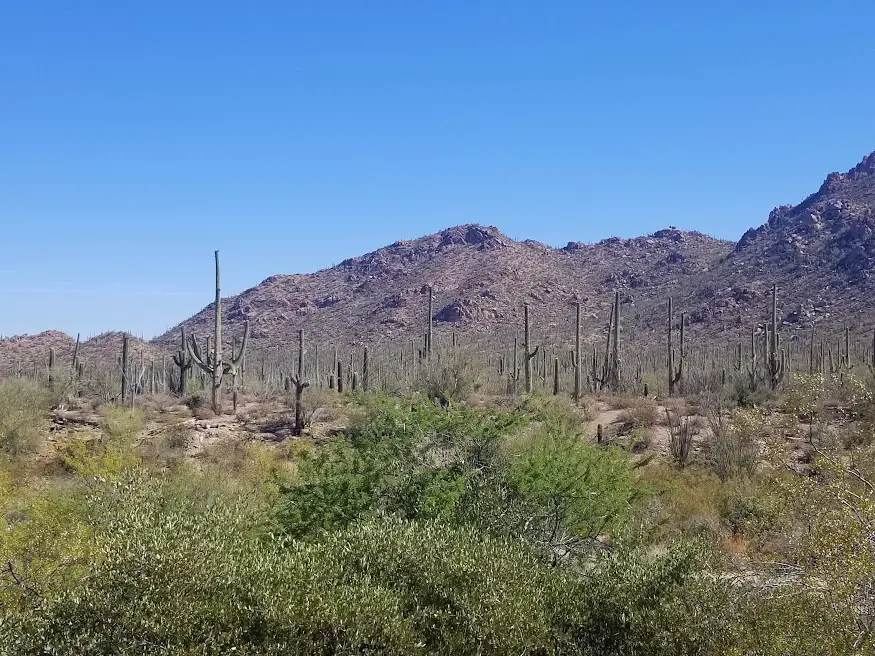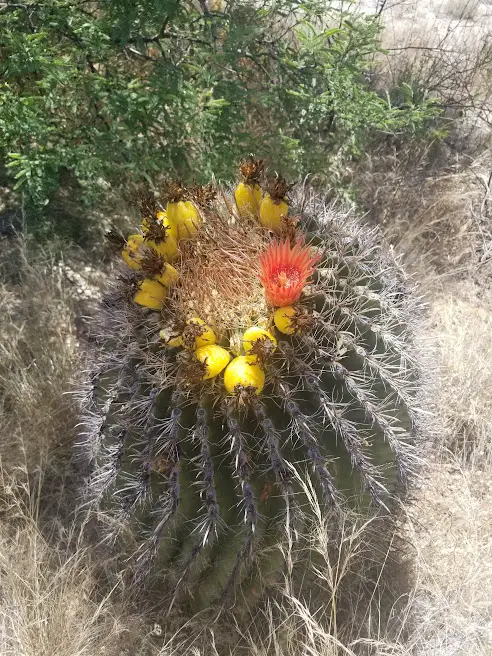
Park Overview
A Saguaro is a large cactus specific to the Sonoran Desert, it does not grow naturally anywhere else. The initial push to preserve this sanctuary of Saguaros started in 1928. In 1933 the area was coined a National Monument by president Herbert Hoover. Over the years acreage was added and it was finally upgraded to a National Park in 1994.
There are two sides to this park, one on each side of Tucson. The Tucson Mountain District (TMD) is on the West, and the Rincon Mountain District (RMD) is on the East. It can take anywhere from 30-60 minutes to get from one side to the other depending on traffic.
Getting to Saguaro

Saguaro National Park is located in the city of Tucson, which is in southeastern Arizona. You can fly right into Tucson International Airport, or into Phoenix, which is about 2 hours north. Flying into Phoenix would be smart if you want to see some other sites along the way.
Fees & Cancellation Stamp
It costs $25 to enter Saguaro in a private vehicle. It costs $15 if you enter by foot/bicycle, and $20 by motorcycle. Your pass is good for 7 consecutive days and is good for both ends of the park.
There are two visitor centers: the Rincon Mountain Visitor Center (West) and the Red Hills Visitor Center (East), and you can find the cancellation stamp at either.
Time Required in Saguaro

To see the basics of both sides of the park, you will need one very full day. However, I do think you should allot at least 1.5 days if you want to both driving loops, spend time at the visitor centers, and do any hiking.
Camping in Saguaro
There are 6 campgrounds where you can back country camp in the Saguaro Wilderness Area. Sites are for up to 6 people only and cost $8 per night. For more detailed information on each campground, visit the National Park website. There are no camp grounds in Saguaro that offer car or RV camping.
Things to do in Saguaro
West Side
Red Hills Visitor Center
Desert Discovery Nature Trail
Bajada Loop Drive
Valley View Overlook Trail
Signal Hill Petroglyphs
Watch the sunset at Gates Pass
East Side
The West side is the most popular, but the East should not be passed over. My general observation was that the largest collection of Saguaros was on the West side, but there was a greater variety of other plants and vegetation on the East side.
The biggest thing to do on the East side is the Cactus Forest Loop Drive, which is 8 miles long. There are a bunch of other overlooks but I don’t remember going to them on my trip. Here is a really good blog post about all the things to see on the East!
Hiking in Saguaro

The only hiking I was able to do was the walk up to the petroglyphs, and I briefly walked on another trail (both on the West side). Since I am not familiar at all with any of the hikes, I listed the names of the hikes with their distances, all found on the NPS website.
West
Wild Dog Trail (1.8 miles)
King Canyon/ Gould Mine Loop (2.4 miles, 380 feet elevation)
Sendero Esperanza Trail to the Ridge/ To Wasson Peak (3.4-8 miles, 220-1600 feet elevation)
East
Freeman Homestead Trail (1 mile)
Loma Verde Loop (3.8 miles, 60 feet elevation)
Hope Camp and Ridgeview Trail (2 miles, 400 feet elevation)
Garwood Dam and Wildhorse Tank (6.4 miles)
Tanque Verde Ridge Trail (Distance and Elevation Varies)
Know before you go
Don’t go in the summer. The main purpose of my trip to AZ was to see the Grand Canyon and I decided to drive down to Saguaro since I was so close. Honestly, the temperature at the Grand Canyon wasn’t bad at all, but Tucson is much further south and I was miserable. I enjoyed the driving loops and where I went to see the sunset, but any extended walking I did was unbearable. I really hope to get back to Saguaro because I didn’t do this park justice.
Also, make sure you pack food in to the park with you, OR plan your day around stopping in Tucson. There is no food on either end of Saguaro.
Last updated: April 29, 2023
Leave a Reply